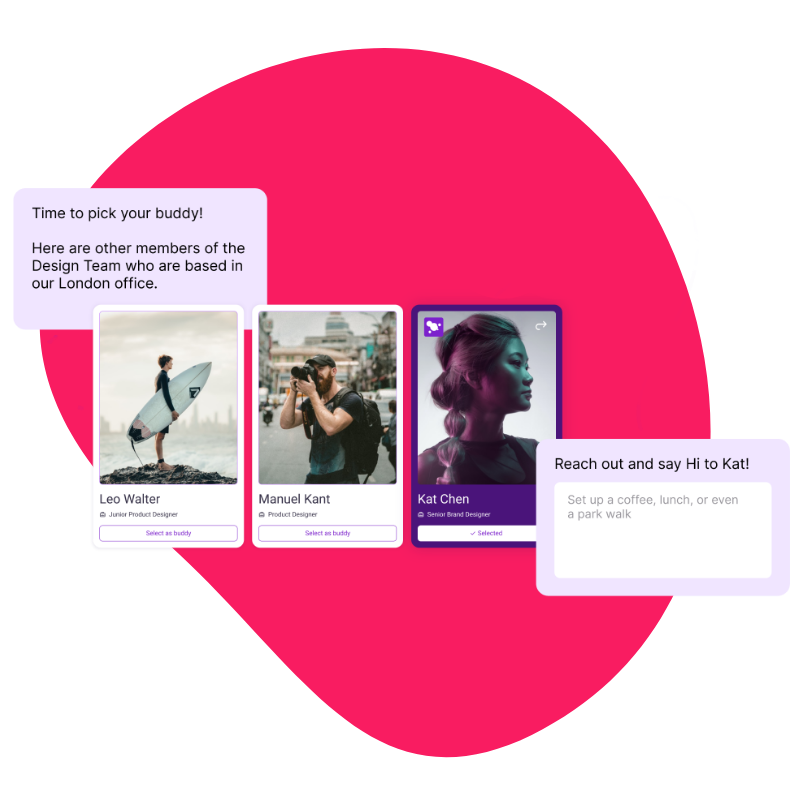Why Employee Engagement Programs Fail (And What To Do About It)
With the holidays in full swing and a new year on the horizon, this is the perfect time to take stock of your employee engagement programs and start to think about what adjustments you’ll make in 2024.
But first, let’s set the broader scene. It’s probably no surprise that, according to Mercer, U.S. employers are planning to budget less for raises next year. Combine that with Gallup data on the increasing number of angry, stressed, and disengaged workers and the cooling job market, and you have a potentially sticky situation.
So what can you do? Focus on what’s in your control – and get back to basics.
Why Employee Engagement Programs Fail
While every company and workforce will have unique needs, we’ve found that no matter the program – whether onboarding, learning and development, performance management, or change management – you need four specific components in play at the same time: engagement, nudges, ease, and connection.
So most employee engagement programs fail because:
They lack engagement.
Meaningful engagement is only achieved when your programs and messaging are meaningful and personalized, and your employees understand the greater mission of why your program is important to them and the company.
They lack nudges.
Sometimes employees might see the value in your programs and want to participate, but they get overwhelmed when these programs are delivered in “big chunks.” Use bite-sized, relevant communications, delivered at the right time with the right information.
They lack ease.
If you want employee participation, you need to make their experience as easy as possible. In our most recent employee connection survey, 42% of U.S. respondents said they opted out of engagement programs because they’re not convenient. Ask yourself: “Is this designed for employees’ convenience or my own?” Use employees’ messenger of choice and reduce the number of different system log-ins.
They lack connection.
To really make your programs click, you need many individuals to come together to foster strong cross-organizational collaboration. When employees feel a sense of connection, that turns a single action into a movement that spans teams and encourages company-wide change. In our recent survey, 51% of U.S. workers said their company’s engagement programs are successful because they help form strong relationships between co-workers.
Think about your current HR programs and how they stack up against these four best practices. Are you grounding your strategy in connection? Are you delivering communications that are clear and easy to follow? Do you invite participation?

Onboarding as the First Point of Connection
If you’re still struggling with where to begin, start at the beginning – with employee onboarding. A well-designed onboarding program that works for on-site, remote, and hybrid workers will set employees up for success, immediately connecting them to your culture and decreasing voluntary turnover in the long run.
In fact, a recent Wall Street Journal article signaled the end of the honeymoon phase for new joiners, and it’s having a serious business impact. The piece cited Qualtrics data that shows employees less than six months into a new role feel less engaged and have lower intent to stay than their more tenured colleagues.
To assess the current state of your onboarding program, make a point to reach out to your new hires and ask them about their experience. Ask them what they liked and what they would improve. Use this feedback as a starting point to give your onboarding process a refresh in 2024.
Need some more inspiration? Check out this Q&A with Darren Gant from Cisco Meraki. He shares his tactics for building a culture of care, starting with onboarding.